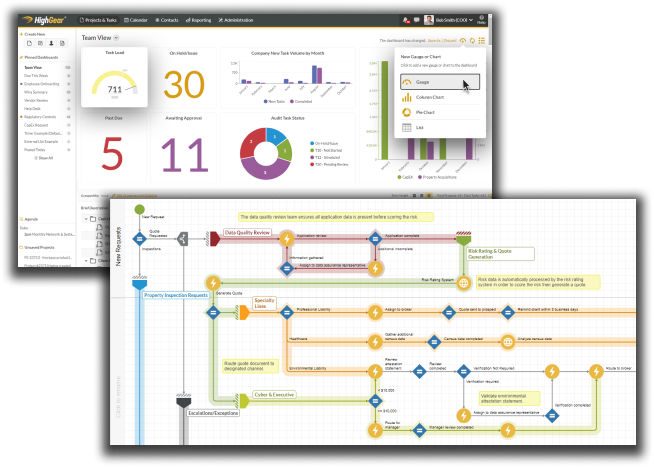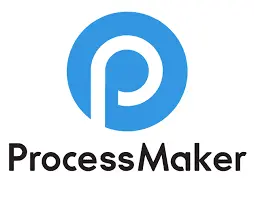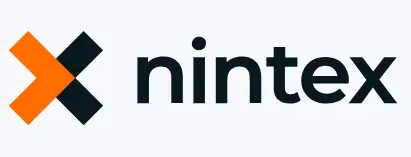In 2024, choosing the right workflow automation software is arguably one of the most impactful decisions an enterprise can make.
As enterprises look to improve efficiency, increase visibility, and enhance cross-departmental collaboration, workflow automation has become essential. What started decades ago as simple routing systems has evolved into intelligent, enterprise-grade platforms capable of managing complex multi-step processes with little to no coding required.
In recent years, there’s been an explosion of workflow automation software tools on the market. We’ve narrowed them down to compare some of the best currently available. Among the solutions we will cover is our workflow automation platform – HighGear – which quickly earned acclaim for its no-code simplicity paired with enterprise-grade security and oversight.
What Is Workflow Automation Software?
Getting business done is all about processes. From the moment a customer order arrives to the final delivery at someone’s doorstep, a workflow is in motion, involving multiple employees, tasks, systems, and approvals.
The more people, tasks, and integrations involved, the more complex the workflows become. And complexity leads to inefficiency — the potential for mistakes or delays multiplies exponentially. This is where workflow automation platforms come to the rescue.
Workflow automation software can optimize workflows by automatically routing tasks, data, and files to the appropriate people and systems in the proper sequence without all the manual legwork. This not only prevents the human-error “fumbles” but also provides visibility so you can catch lags through real-time tracking and analytics.
By coordinating all the moving parts flawlessly behind the scenes, workflow automation software helps enterprises lock business processes into hyperdrive for enhanced speed, consistency, and collaboration across departments.
The best enterprise workflow software platforms make it simple to build and implement customized workflows without extensive IT help or coding expertise. Keep an eye out for features such as visual workflow builders, integration with existing software systems, real-time tracking and insights, and options for setting automation triggers and rules.
What to Look for in a World-Class Workflow Automation Tool
When assessing options, these are features enterprises should keep top of mind:
Flexibility Out of the Box – Even the most agile platforms will slow you down if they can’t adapt easily to your unique processes. Prioritize customizable forms, fields, routing rules, and approval steps that can be modified on the fly.
Intuitive by Design – If your workflow software still requires a thick user manual or weeks of training, productivity will stagnate, waiting for users to get up to speed. Seek out visual workflow builders and intuitive interfaces; users can start navigating intuitively from day one.
Plays Well with Others – Any automation gaps or weak integrations leave room for bottlenecks. The ideal solution offers a deep bench of pre-built integrations with business-critical platforms you already use, plus API access for custom connections.
Mobile Without Limitations – Mobile accessibility is non-negotiable. Evaluate if the workflow management software has responsive interfaces optimized for managing workflows equally well on desktop or mobile without constraints.
Collaboration Baked In – Workflows live and die by teamwork. The platform should promote cross-functional collaboration through intuitive task management, notifications, and visibility controls.
Governance That’s Air Tight – With customers’ data and mission-critical processes at stake, all governance guardrails must be actively in place so you can check the box on adherence and get back to business. Select platforms with sophisticated permission layers, activity audit trails, and version histories.
Expert Support On Call – Workflow transitions build internal experts over time. But in the moment, nothing beats having responsive technical specialists and plenty of resources at the ready to fill knowledge gaps. From setup and training of admins to advising end-users, the right support team feels like an extension of your own staff – minus the overhead.
Top 5 Workflow Automation Software Platforms of 2024
With so many boxes to check when selecting workflow automation software, it can be a challenge to evaluate all the options. To help narrow down the field, we’ve identified five of the best.
HighGear

As the pioneers behind HighGear, we’ve dedicated countless hours relentlessly innovating the art of intelligent automation into the industry’s most formidable all-in-one automation powerhouse. Bold statement, we know.
We custom-built HighGear from scratch to fulfill a vision – workflow automation accessible to all. No convoluted IT hurdles. No disjointed separate tools cobbling partial solutions together. Just end-to-end intelligent automation.
HighGear’s stand-out features include:
No-Code Workflow Building – Our intuitive drag-and-drop workflow designer lets anyone create multi-step workflows in minutes without coding expertise. Now, you can ditch the army of programmers and build what you need in-house.
Automate Custom Notifications – Intelligent task monitoring tracks workflow tasks in real-time. Get alerts for due dates, delays, and production schedules so you can proactively keep everything on time across departments.
Granular Access Controls – Manage multi-step workflows with role-based permissions. Sensitive data stays secure, the right people see only relevant info, and proper procedures are followed every time through customizable access rules.
Built to Meet Regulations – Adhere to industry rules with customizable task routing and one-click access to complete logs showing who changed what and when – no more pre-audit fire drills.
Actionable Analytics – Forget periodic reporting that shows what WAS. HighGear embeds real-time tracking so you know what’s working NOW and what needs assistance across integrated enterprise systems with just a few clicks.
Connects with thousands of Integrations – Natively integrates with platforms like Zapier and Microsoft Power Platform for simple drag-and-drop connectivity to thousands of business apps. Customize even more integrations for unique needs with HighGear’s secure web APIs.
Integrify

Integrify boasts business-accessible workflow automation as a low-code platform. But make no mistake – low-code brings limitations compared to true no-code solutions. Integrify users still face a coding barrier once ambitions exceed baseline functionality.
Still, amongst the many workflow automation options, Integrify delivers value, including:
Workflow Builder – Integrify enables rapid drag-and-drop automation of processes with their workflow builder with advanced features spanning task assignments, multi-tiered approvals, exception management, and more.
Adaptable Custom Form Builder – Create unlimited interactive and responsive forms with advanced layout tools for a uniform experience across all devices.
Self-Service Portal – Integrify features a branded self-service experience for employees, partners, and customers featuring customizable dashboards, role-based permissions, and collaboration tools for efficient process management.
Enterprise Integrations – Through a REST-based open API, Integrify makes bi-directional integration with existing enterprise systems straightforward and sustainable in the long term by providing the flexibility to adapt as needs change.
ProcessMaker

For some enterprises, ProcessMaker could hit the automation sweet spot with its low-code platform. However, we are of the mind that no-code solutions are better for unleashing a business’s full automation potential, with any employee being able to build advanced workflows without being constrained by the coding bottleneck inherent in low-code tools.
That said, ProcessMaker brings some nice features to the table, including:
Affordable Open Source Option – The open-source Community Edition boots up rapid workflow building on a budget for smaller teams.
Process Reuse – Quickly construct new workflows by reusing existing process templates already proven for your systems.
Intelligent Document Processing (IDP) – powered by AI for fast data capture from documents. IDP features like Smart OCR eliminates manual data entry by recognizing various document types and automatically extracting text, images, tables, and metadata into structured data.
External Integrations – Connect processes across platforms through the open API.
Jotform

This workflow automation platform specializes in adaptable form building for gathering customer and employee information alike.
With Jotform, you can quickly construct customized forms, feedback surveys, approvals workflows, and more with a simple drag-and-drop form creator. Use ready templates or build from scratch – no coding skills required.
However, while meeting many basic business needs, Jotform does face limitations on advanced workflow automation functionality. Yet some valuable strengths include:
Flexible Form Building – A simple visual editor makes creating responsive forms for data gathering quick and easy for users of any skill level.
Targeted Data Analytics – Monitor metrics like form abandonment rates in real-time to optimize engagement.
Global Data Compliance – Jotform simplifies compliance through flexible hosting options, letting you control exactly where customer data resides from region to region.
Integrations – Connect natively with essential platforms like Google Workspace, Dropbox, and Salesforce. Expand even further through integration enabler Zapier.

Nintex is a powerful, user-friendly workflow automation platform, particularly in SharePoint and Office 365 environments. It’s a great choice if your enterprise is heavily invested in Microsoft ecosystems. Nintex also extends to core systems like SAP and Salesforce through workflow API connectors.
Microsoft Environment Automation – Deep automation abilities across Office 365, SharePoint, Teams, Outlook, and other Microsoft solutions.
Nintex Workflow Cloud Designer – This browser-based, drag-and-drop environment gives any user the power to build complex workflows.
Robotic Process Automation (RPA) – Automates repetitive tasks 24/7 by building virtual workforces that function unattended to handle high-volume structured data tasks accurately and at speed.
Mobile Workflow Management – Stay connected to workflows through native apps for iOS and Android.
Benefits of Workflow Automation Software for Your Enterprise
Time Efficiency
Workflow automation propels enterprises ahead by radically shrinking process timelines. Rote tasks happen in a flash, freeing up precious hours. With automation slashing lead times, companies can pivot on a dime while competitors play catch-up.
Unleash Potential with Automation
Employees are freed from the mundane and repetitive to channel their talents into strategic and creative work instead. Workflow automation liberates staff by handling the drudge tasks in the background. Output skyrockets and job satisfaction swells when technology takes over tediousness.
Precision and Accuracy
The human touch is invaluable, but it’s also prone to error, especially when it comes to repetitive grunt work. Workflow automation software is the antidote to this vulnerability, guaranteeing a high degree of precision in data handling and process execution.
Enhanced Collaboration and Communication
Gone are the days of siloed departments and fragmented communication. Workflow automation technology breaks down internal walls that once divided teams, departments, and systems. Now, handoffs happen in real-time through automated alerts, notifications, and instant record access. One version of the truth – fully visible to all players involved – guarantees everyone’s on the same page.
Built-In Compliance Guardrails
With regulations abounding, staying compliant is non-negotiable, especially as enterprises scale. As automated workflows handle processes, adherence checks happen in real-time behind the scenes. Alerts notify or processes pause if pending actions risk violation. Permissions provide eyes only on relevant data, protecting privacy. Complete access logs offer quick audits.
Wrapping Up
Now, with a stronger understanding of what workflow automation promises, it’s time to drive these solutions forward in your enterprise without delay.
At HighGear, we’re pioneering the future of intelligent workflow automation. We invite you to schedule a personalized demo of our no-code platform with one of our automation specialists to map out your goals and possibilities.
